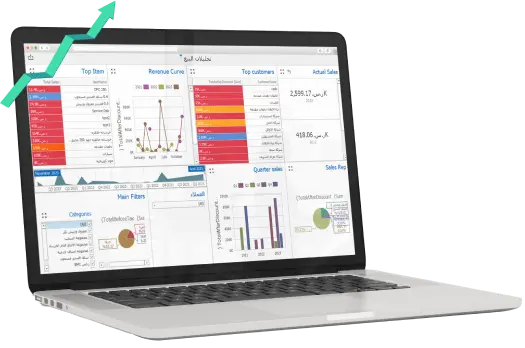The most important branches of financial accounting in most accounting programs, how to determine the price of the product, the efficiency of production lines, the strength of the commodity and its compatibility with the forces of supply and demand. It has a very strong and influential role in small and large industrial enterprises because these institutions are the ones that work to determine the price of the product for the factory in a correct manner. So that we can, do competition in the market strongly. And determining the efficiency of its production lines in terms of profit and loss
Definition of cost accounting
Cost accounting and industry management is a technique for evaluating the unit cost of the product and determining the extent of feasibility and the ability to grow and achieve the highest profitability in order to develop the performance of the facility in terms of its own costs and to achieve the highest performance rates in the production of this product, which helps the senior management oversight.
The difference between financial accounting and cost accounting
|
Costs |
Financial | |
|
It serves internal parties in the administration at all levels |
Financial accounting serves external parties to the facility such as investors, banks and creditors |
In terms of the user |
|
Do not adhere to financial accounting principles |
Adhere to the principles of financial accounting |
In terms of adherence to accounting principles |
|
Data based on appropriate and timely evaluation for long-term planning
|
Data based on accuracy and analysis without errors because it is supported by documents |
In terms of the nature of the information |
|
It depends on future analysis with the use of actual or happened data in the past to predict the future |
It is based on an actual financial effect during a given fiscal period in aggregate form |
In terms of the quality of information |
|
Atypical and unconventional in shape and non-periodic content |
Stereotypical and traditional in form and content on a regular basis |
In terms of the nature of the reports |
Classification of cost elements in cost accounting
There are several classifications of cost accounting according to generally accepted accounting standards and principles consistent with different accounting programs
According to the job
Direct industrial costs: It is a direct cost in how to determine the unit cost of the final product, such as raw materials and wages.
Indirect industrial costs: It is an indirect cost that is not related to determining the cost of the product, such as maintenance, spare parts and fuel (indirect materials) wages of supervisors and engineers (indirect wages)
According to the activity :-
Variable costs: they are costs that are directly proportional to the volume of activity, so the more production increases, the more costs are with the constant unit share of the cost.
Fixed costs: They are costs that are inversely proportional to the volume of activity although they remain constant at times when the volume of activity changes.
Mixed costs: They are costs that contain a fixed part and a variable part
How to separate the variable and fixed costs and the steps of separation in cost accounting is based on the highest point in the activity level and the lowest point in the activity level
1- Determining two points in the facility's activity level, the highest point and the lowest point.
2-Subtracting the lowest point of the product from the highest point and all costs associated with the product.
3 -Dividing the change in costs by the change in the volume of production.3-
4-The higher and lower volumes are multiplied by the rate of change, and we get the constant part, which is constant in all of us of the two volumes:
According to time
Actual: It is a cost that is calculated when it actually occurs.
Standard: it is a future cost that is determined on the basis of historical cost behavior. It depends on more accurate forecasting.
According to the accounting period :-
Product: It is a cost or group of costs incurred by the facility to obtain the product in the final form.
Period: It is a cost that does not participate in production at all because it deals with an expense in accordance with generally accepted accounting principles and standards, such as selling and marketing expenses.
According to censorship:
Controlled: It depends on the point of view of the responsible person when determining the amount of cost or not, which affects the cost reduction.
Uncensored: It depends on the extent of the limits of the authority of those who control the cost in accordance with the principles and accounting standards spent on them.
According to planning and decision making
Opportunity cost: It is a cost that results from choosing an alternative to dispense with the other in order to achieve alternative benefits to achieve the highest profit at the lowest cost.
Sunken Cost: It is a cost that occurred in the past and has become a historical cost, such as expenses and rents.
The cost accounting of accounting elements is important and vital to the attention and should be taken into account when designing and management of accounting software for ready-made industrial enterprises to save time and effort in calculating the unit cost of the final product







